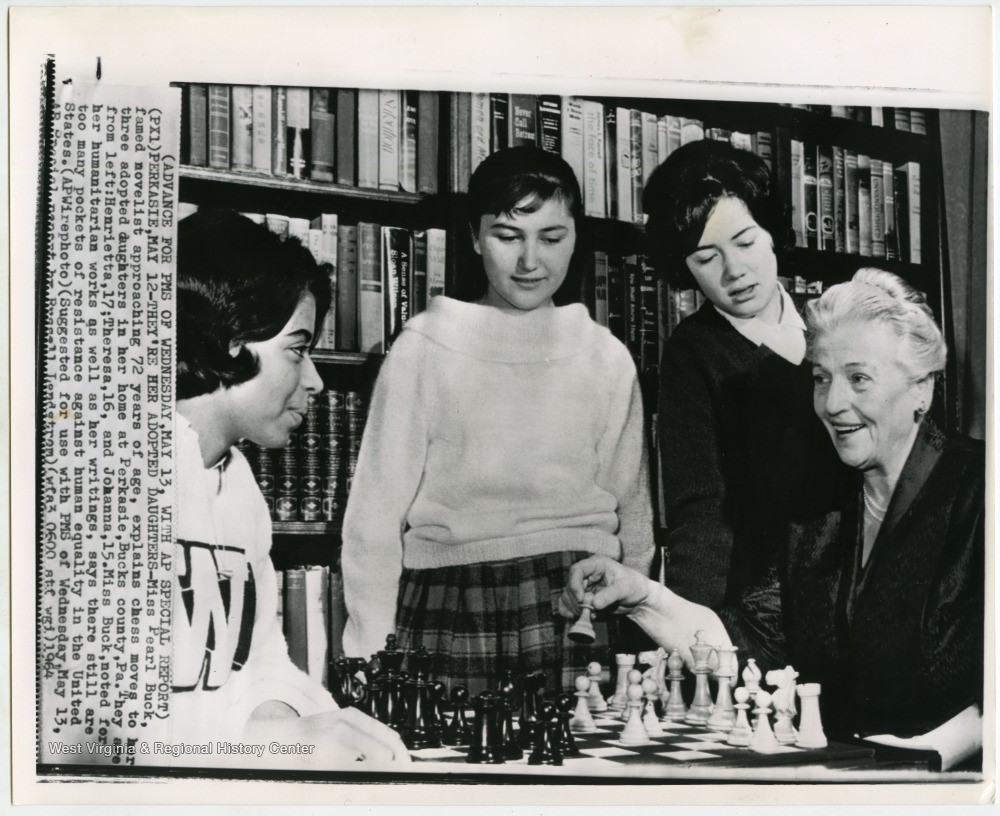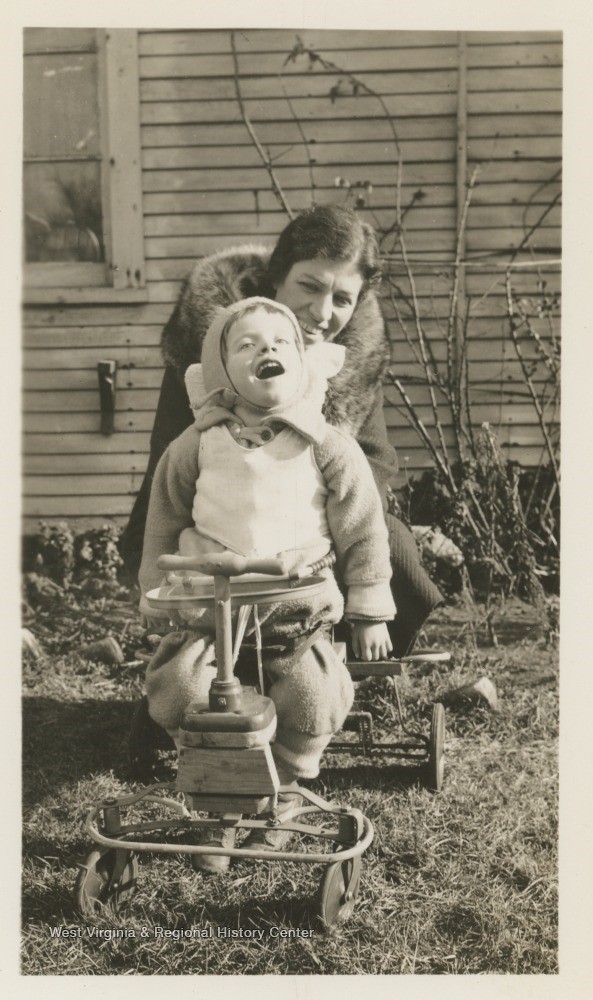New Acquisitions Reveal Pearl S. Buck’s Thoughts on Sex and Gender
Posted by Mary Alvarez.September 11th, 2023
written by Bethany Winters

The West Virginia & Regional History Center recently acquired three original manuscripts written by the famous author, activist, and native West Virginian Pearl S. Buck. The acquisition includes a review of the book Japan Over Asia by William Henry Chamberlain and a draft of an unpublished short story entitled “Mother Without Child.” Perhaps the most notable piece in the acquisition is a possibly-unpublished article called “Letter to a Girl.” These three manuscripts will soon be added to the WVRHC’s Pearl S. Buck Papers collection, A&M #0727.
Pearl S. Buck was born in Hillsboro, West Virginia in 1892. However, she spent most of her childhood and young adulthood in China, where her parents worked as Christian missionaries and scholars. It was in China that she first rose to prominence as a writer, publishing her first novels and short stories in the 1920s and 30s. In 1935, Buck’s bestselling House of Earth trilogy portrayed Chinese peasant life with a level of sympathy and understanding previously unseen in Western literature, and its first volume earned her the Pulitzer Prize. She continued to publish critically-acclaimed books and stories throughout her lifetime, though no others reached the same level of prominence as the House of Earth trilogy.
Inspired by her time in China and by her experience raising her developmentally disabled daughter Caroline, Pearl S. Buck spent the latter half of her life working as an activist and philanthropist. She wrote essays in support of the NAACP and Urban League, advocated for birth control with her friend Margaret Sanger, helped develop the United Nations’ laws against genocide, lobbied the U.S. Congress against restrictions on immigration, and campaigned for cultural understanding between Asian and American people. Buck founded the world’s first international and interracial adoption agency, Welcome House. She also established Pearl S. Buck International, a foundation that remains active to this day in providing humanitarian aid to children in several countries. Buck died in 1973 and is buried at her home in Green Hills Farm, Pennsylvania.

Pearl S. Buck’s lifelong dedication to helping women and children is reflected in her “Letter to a Girl.” Buck evidently spent considerable time working on this piece, as the acquisition includes three different drafts of the letter. Her passion for protecting and educating girls comes through on each page, as she sympathetically advises the letter’s recipient — a seventeen-year-old girl — in matters of love, health, and career. Buck responds to the girl’s questions about young love with the frank admission that “sex is the primary concern in every normal woman and every normal man.” She proclaims that people deserve “more and better sex” within loving relationships, but warns the girl against “mere emptying of the glands for physical relief… a woman is not a clay pot.” She asks the girl to focus on her career and education rather than on young men. “In this new age nothing keeps you from being whatever you want to be…” Buck states, adding that, “it has become possible for a woman to consider the presidency of the United States…” Buck concludes her letter to the girl with an inspirational decree: “take care of your precious self… because to unfathomable depths and to immeasurable heights, you are the guardian of the human race.”
Other portions of this letter seem to contradict Buck’s more liberal views of gender. In one section, she advocates for her belief in gender essentialism: the theory that men and women have fundamental mental differences due to their biology. Here, she initially condemns old-fashioned gender roles, decrying “the woman who retreats into her home and family, who shuts her doors and windows to the world,” as well as “the limited male who is himself only when he is with other males, hunting, fishing, and clowning…” Nevertheless, Buck reminds the letter’s recipient that “of course you bear the children, of course you want a home, of course you must be responsible for your home and family…” She also believes in complementarianism, stating that “the most tragic loneliness of life is when man is without woman and woman is without man.”
Bafflingly, the letter includes a declaration that in matters of sex, the woman “is responsible for herself, and for the man.” Buck states repeatedly that it is solely the woman’s duty to say no to premarital sex, to control both the actions and feelings of herself and her partner. “For I do not believe that there is such a thing as rape -” Buck writes, “except perhaps in the very few, proportionately, cases of actual insanity.” She laments the way that girls’ miseducation about sex has led to the birth of 250,000 children outside of wedlock annually at that time, of whom “more than half are born of high school girls.” Why does Buck blame women for this, when men have an equal role in procreation? How can she recall statistics about underage pregnancy while denying the existence of rape? This letter gives no further explanation.
Pearl S. Buck’s “Letter to a Girl” is undated, but context clues indicate that it was written in the 1950s. The first clue is in the letter’s references to the Space Age with its technological revolution in household appliances. It also warns against sex outside of marriage because, “in spite of every precaution, a child is always possible when men and women meet physically.” Thus, this letter was presumably written before the first birth control pill was approved in 1960. Although some parts of this letter advocate traditional gender roles, Buck also calls for women “to organize, perhaps, into cooperative effort,” in a statement foreshadowing the nascent second-wave feminist movement. As a whole, Pearl S. Buck’s “Letter to a Girl” provides a glimpse of the author’s complex, even seemingly contradictory, views of sex and gender during a historic turning point on these issues.





